Imiquad Cream is not a miracle cure. It doesn’t vanish warts overnight or erase skin damage in a week. But for people dealing with stubborn skin conditions like genital warts, actinic keratosis, or early-stage basal cell carcinoma, it’s one of the few treatments that actually works by training your body to fight back.
Unlike antibiotics or antifungals that kill germs directly, Imiquad Cream doesn’t touch the problem head-on. Instead, it wakes up your immune system. Think of it like a silent alarm that tells your skin: "Something’s wrong here. Send help." Your body then sends immune cells to the site - T-cells, cytokines, interferons - all of them attacking the infected or abnormal cells. It’s a slow burn, not a flash. But when it works, the results last.
What’s Actually in Imiquad Cream?
The active ingredient is imiquimod, a synthetic compound that mimics part of a virus. It’s not a steroid. It’s not an antiviral drug. It’s an immune response modifier. That means it doesn’t kill the virus or the abnormal cells - it tells your immune system to do the job.
Imiquad Cream comes in a 5% strength. That’s the standard concentration used for most skin conditions. The cream is white, slightly thick, and has a faint medicinal smell. It’s applied directly to the affected skin, usually three times a week - often on Mondays, Wednesdays, and Fridays - before bedtime. You leave it on for 6 to 10 hours, then wash it off with mild soap and water.
The inactive ingredients include cetyl alcohol, stearyl alcohol, and white petrolatum. These help the cream stick to the skin and release the active ingredient slowly. They’re not harmful, but they can cause irritation in sensitive skin. That’s normal. The real issue isn’t the cream - it’s what your body does in response to it.
What Conditions Is Imiquad Cream Used For?
There are three main uses approved by health authorities like the FDA and Medsafe (New Zealand’s medicines regulator):
- Genital and perianal warts - caused by certain strains of human papillomavirus (HPV). These are common, contagious, and often return after freezing or laser treatment. Imiquad Cream reduces recurrence by helping your body clear the virus from deeper layers of skin.
- Actinic keratosis - rough, scaly patches on sun-damaged skin. Left untreated, they can turn into squamous cell carcinoma. Imiquad Cream is often used on the face or scalp where surgery isn’t ideal.
- Superficial basal cell carcinoma - a slow-growing skin cancer. It’s used when surgery isn’t possible or preferred, especially on the nose, eyelids, or ears where scarring matters.
It’s not used for common warts on hands or feet. It’s not for psoriasis, eczema, or acne. Using it for the wrong condition won’t help - and might make your skin worse.
How Long Does It Take to Work?
Patience is required. Most people don’t see results in the first week. In fact, the skin often looks worse before it gets better.
For genital warts, treatment usually lasts up to 16 weeks. You might notice redness, flaking, or small sores after 2-4 weeks. That’s not a bad sign - it’s your immune system working. By week 8-12, warts often shrink or disappear. Some need the full 16 weeks.
For actinic keratosis, treatment is shorter - typically 2 to 4 weeks. You apply it daily for 2 weeks, then take a 2-week break. If patches remain, your doctor might ask you to do another cycle.
For basal cell carcinoma, treatment lasts 6 weeks. You’ll need follow-up biopsies to confirm the cancer is gone. Don’t stop just because the skin looks healed. The cancer cells underneath might still be active.
Studies show that after 16 weeks, about 50-70% of genital warts clear completely. For actinic keratosis, clearance rates range from 35% to 80%, depending on how thick the lesions are. Success depends on consistent use and your immune system’s strength.
Side Effects: What to Expect
Imiquad Cream causes local reactions - and they’re not mild. About 90% of users experience some level of skin irritation. That’s normal. But knowing what’s normal versus what’s dangerous matters.
Common side effects include:
- Redness, swelling, itching, or burning at the application site
- Flaking, scabbing, or crusting
- Small sores or ulcers
- Flu-like symptoms (headache, fatigue, muscle aches) - less common, but possible
These usually peak around week 2-3 and improve over time. You might feel tired or achy - not because the cream is toxic, but because your immune system is firing on all cylinders.
Red flags that need a doctor’s attention:
- Severe pain that doesn’t improve with over-the-counter painkillers
- Widespread rash beyond the treated area
- Fever over 38.5°C (101.3°F)
- Signs of infection: pus, increasing warmth, spreading red streaks
If you’re using it on the genital area, avoid sex while the cream is on your skin. It can irritate your partner and weaken condoms or diaphragms. Use a barrier method after washing it off.
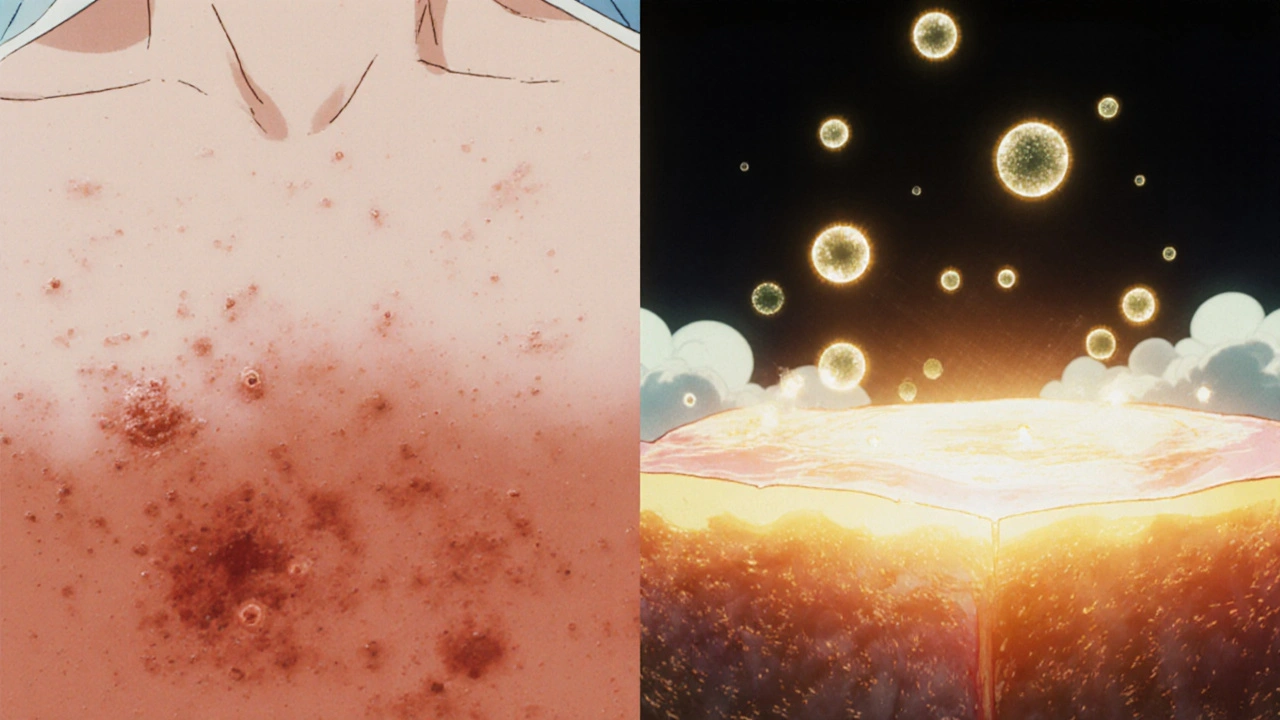
Who Shouldn’t Use Imiquad Cream?
It’s not safe for everyone.
Avoid it if you:
- Have a weakened immune system (HIV/AIDS, organ transplant, chemotherapy)
- Are allergic to imiquimod or any of the cream’s ingredients
- Have autoimmune diseases like lupus or psoriasis (it can trigger flares)
- Are pregnant or breastfeeding - there’s not enough data to say it’s safe
- Are using other topical treatments on the same area (like retinoids or steroids)
People with sensitive skin or a history of severe eczema should start with a patch test. Apply a tiny amount on your inner arm for 3 days. If it turns bright red, itches badly, or swells - don’t use it on your face or genitals.
How to Use It Right
Most people fail with Imiquad Cream not because it doesn’t work - but because they use it wrong.
Here’s how to get it right:
- Wash and dry the area gently before applying. Don’t use harsh soaps.
- Use a pea-sized amount for each wart or patch. A little goes a long way.
- Apply with clean fingers or a cotton swab. Don’t let it touch healthy skin.
- Leave it on for 6-10 hours - overnight is easiest.
- Wash off with mild soap and water in the morning.
- Don’t cover it with bandages or plastic wrap unless your doctor says to.
- Track your progress with photos every 2 weeks. It’s hard to see small changes day-to-day.
Miss a dose? Skip it. Don’t double up. Consistency matters more than perfection.
How It Compares to Other Treatments
There are other ways to treat genital warts and actinic keratosis. Here’s how Imiquad Cream stacks up:
| Treatment | How It Works | Duration | Pain Level | Recurrence Rate |
|---|---|---|---|---|
| Imiquad Cream | Boosts immune response | 6-16 weeks | Mild to moderate | Low (20-30%) |
| Cryotherapy (freezing) | Destroys tissue with liquid nitrogen | Weekly sessions, 2-4 times | Moderate to high | High (30-50%) |
| Podophyllotoxin (topical solution) | Kills wart cells directly | 3-4 weeks | Moderate | High (40-60%) |
| Surgical removal | Cuts out the lesion | One-time procedure | High (during procedure) | Low (if fully removed) |
| Photodynamic therapy | Laser + light-sensitive drug | 1-2 sessions | High | Low to moderate |
Imiquad Cream wins on two things: low recurrence and no scarring. It’s slower than freezing, but less likely to leave marks. It’s less painful than surgery, but requires more discipline. If you want to avoid cutting or burning your skin - and you’re willing to stick with it - it’s one of the best options.
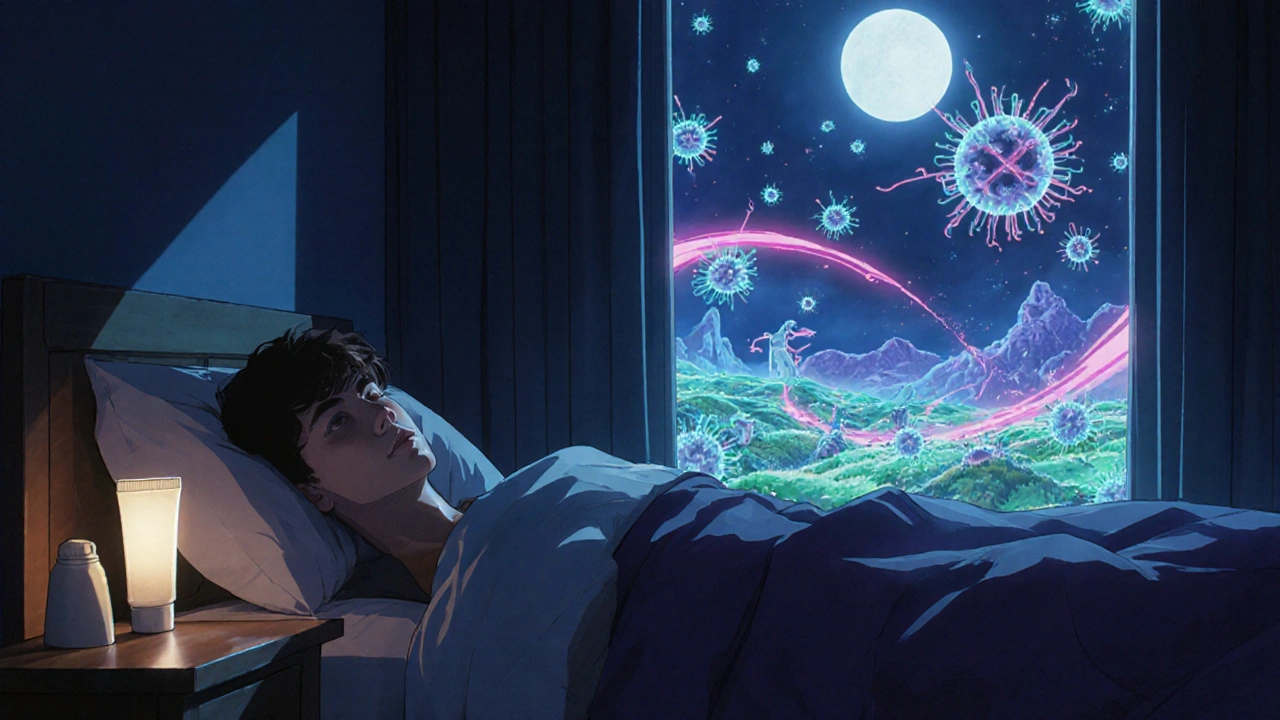
Where to Get It and What It Costs
Imiquad Cream is a prescription-only medication in New Zealand, the U.S., Australia, and most countries. You can’t buy it over the counter. You need to see a doctor or dermatologist first.
In New Zealand, a 2-gram tube (enough for one course of genital warts) costs around NZ$120-$150 without subsidy. If you have a Community Services Card or are over 65, you may pay less through the Pharmaceutical Schedule. Some pharmacies offer generic imiquimod at a lower price - check with your pharmacist.
Don’t buy it online unless it’s from a registered New Zealand pharmacy. Fake versions exist. They might not contain imiquimod at all - or they might be contaminated.
What Happens After Treatment?
Even if the skin looks perfect, follow-up matters.
For genital warts: Get checked again at 3 months. The virus can hide in skin that looks normal. Recurrence is common in the first 6 months.
For actinic keratosis: Protect your skin from the sun. Use SPF 50+ daily. New lesions can appear. Monthly self-checks help catch them early.
For basal cell carcinoma: You’ll need a follow-up biopsy. The cream clears the cancer in most cases, but not all. If it comes back, your doctor will recommend surgery.
Many people feel relieved when the warts or patches disappear. But the real win is preventing cancer or stopping the spread. That’s why sticking to the full treatment plan matters more than how it feels day-to-day.
Can Imiquad Cream cure HPV?
No. Imiquad Cream doesn’t eliminate the HPV virus from your body. It only clears visible warts and helps your immune system control the infection. The virus can still be present in skin that looks normal. That’s why recurrence happens. Vaccines like Gardasil are the only way to prevent HPV infection.
Can I use Imiquad Cream on my face?
Yes - but only for actinic keratosis, not for warts. The skin on your face is thinner and more sensitive. Use a smaller amount and monitor closely. Avoid the eyes, lips, and inside the nose. Your doctor may recommend a lower frequency (e.g., twice a week) to reduce irritation.
Does Imiquad Cream cause cancer?
No. It’s used to treat early skin cancer. There’s no evidence it causes cancer. In fact, by helping your immune system destroy abnormal cells, it reduces the risk of those cells turning into full-blown cancer.
How soon can I have sex after using Imiquad Cream?
Wait at least 24 hours after washing off the cream. Avoid sex while the cream is on your skin - it can irritate your partner and weaken condoms. Even after washing, the skin may still be sensitive. Use protection until your doctor confirms the warts are gone.
Is Imiquad Cream covered by insurance in New Zealand?
Yes, if you qualify. Imiquimod is listed on the New Zealand Pharmaceutical Schedule. If you have a Community Services Card, are over 65, or have a long-term health condition, you pay a subsidized price (usually $5-$25 per prescription). Otherwise, you pay the full cost. Always ask your pharmacist about your eligibility.
Final Thoughts
Imiquad Cream isn’t easy. It’s messy, slow, and sometimes painful. But for people who want to avoid surgery, freezing, or laser treatments - and who are willing to stick with a routine - it’s one of the most effective tools we have.
It works because it doesn’t fight the problem. It lets your body do the fighting. That’s why it’s not a quick fix. It’s a long-term investment in your skin’s health.
If you’ve tried other treatments and they failed - or if you’re tired of the same warts coming back - talk to your doctor about Imiquad Cream. It might be the quiet, stubborn solution you’ve been waiting for.

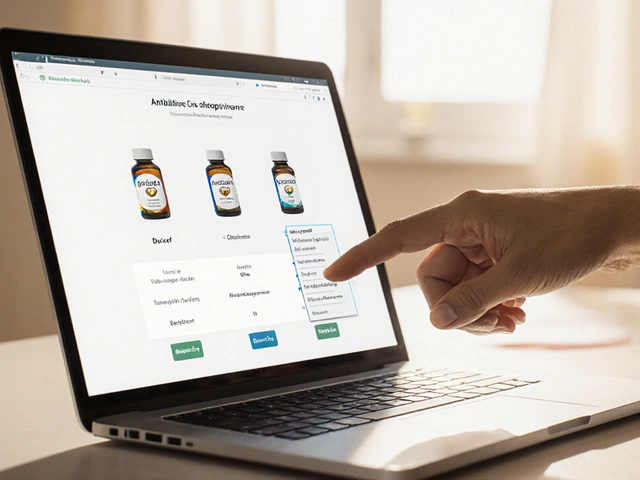

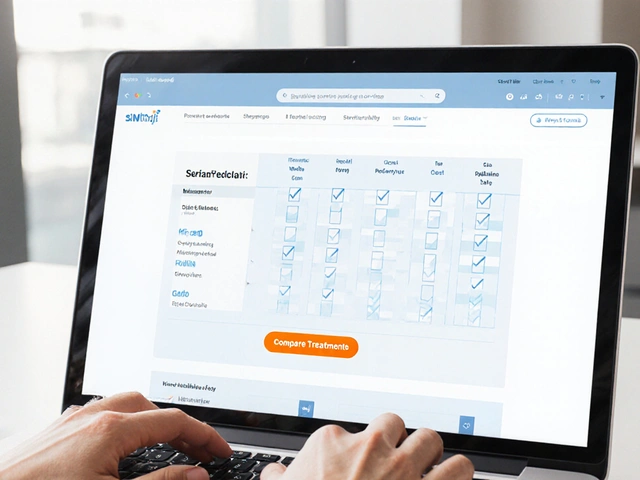
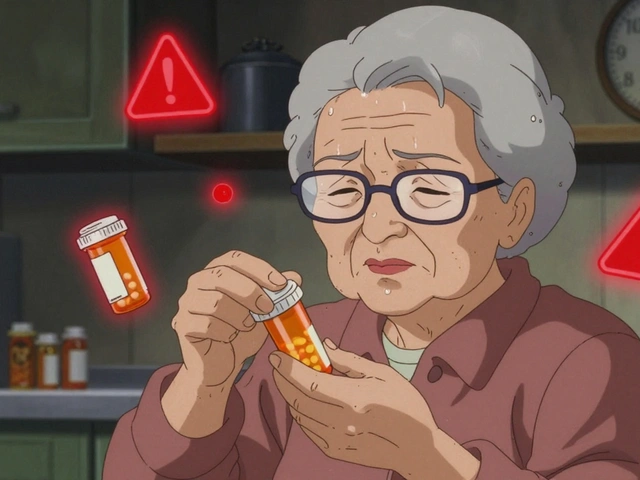
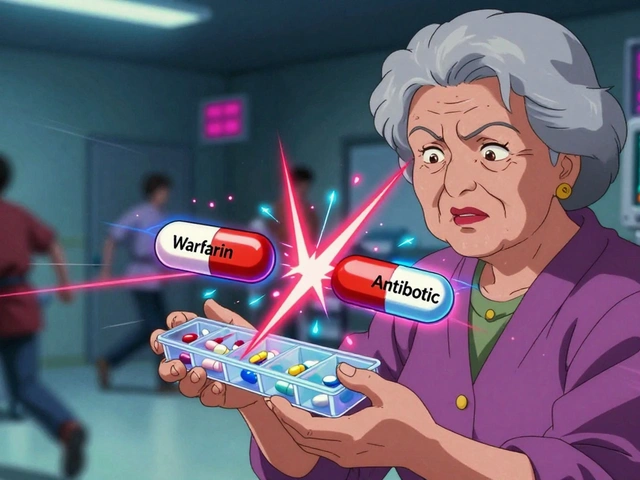
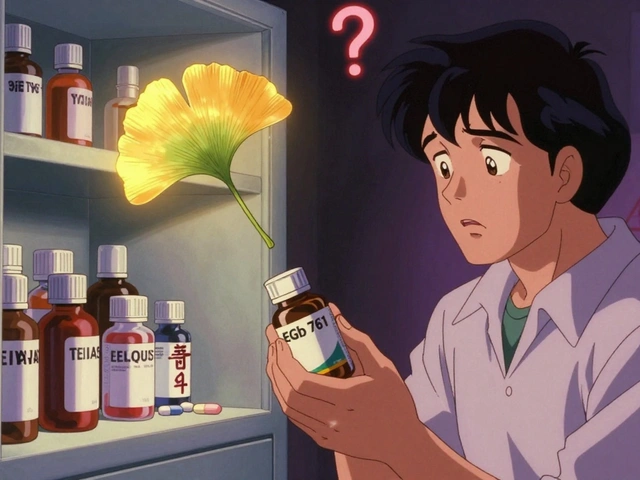
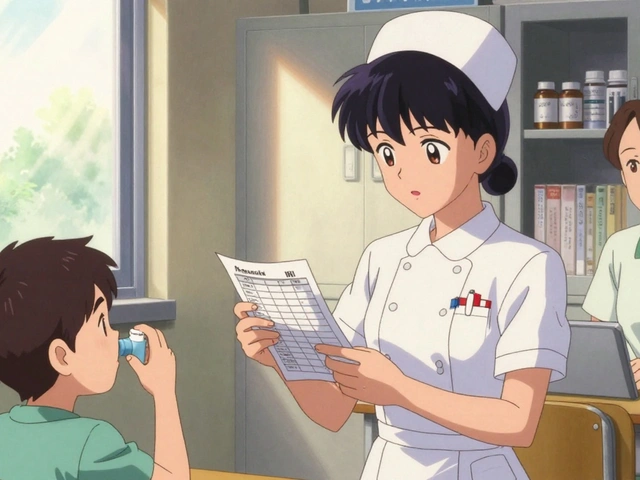
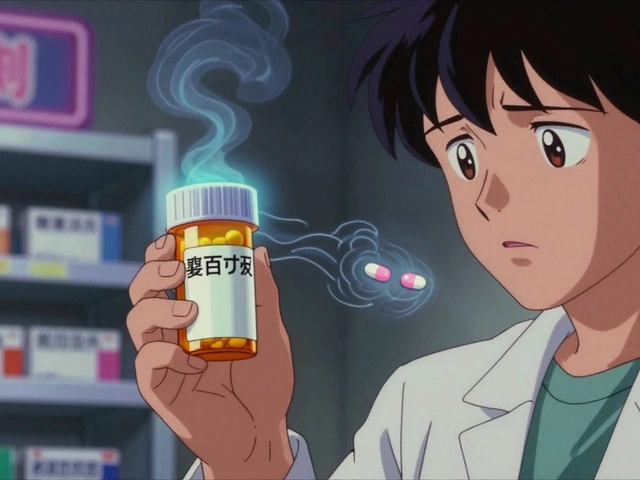
14 Comments
Timothy Uchechukwu
Nov 18 2025Imiquad is just another Big Pharma scam to make you pay for your own immune system to do its job
They could just tell you to eat more garlic and sleep better but where's the profit in that
Hannah Blower
Nov 20 2025Let me break this down for the unenlightened: imiquimod doesn't 'boost immunity'-it dysregulates TLR7 signaling to induce a Th1 cytokine cascade, which is why it works on HPV-associated lesions but fails catastrophically in immunocompromised patients. This isn't medicine, it's immunological warfare wrapped in a petroleum-based emulsion. And yes, I've read the original 2001 NEJM paper. You're welcome.
Gregory Gonzalez
Nov 21 2025Wow. A cream that makes your skin look like it survived a chemical attack but somehow 'works'?
Next they'll sell us a lotion that makes our liver cry to detox our coffee addiction.
Classic. Just classic.
Ronald Stenger
Nov 22 2025Look, I get it. You want to avoid surgery. But this stuff is a time-suck. I had a patient who used it for 16 weeks and still needed excision. Meanwhile, the guy next to him got frozen in two visits and was done. If you're gonna suffer, suffer efficiently. This isn't self-care-it's self-punishment with a prescription.
Samkelo Bodwana
Nov 22 2025I've used imiquimod for actinic keratosis on my scalp after years of sun exposure growing up in rural Zimbabwe. It was rough-red, itchy, flaky for weeks-but the fact that I didn't need a scalpel near my hairline meant everything. I'm not saying it's easy, but it's one of the few treatments that respects the body's own healing power instead of just burning or cutting things out. That’s rare. I know people who’ve had multiple recurrences with cryo, but this? No scars, no surgery, just patience and persistence. If you're willing to sit with the discomfort, it’s worth it. Also, take ibuprofen before bed. It helps with the flu-like symptoms. And don't forget the photos. You won't believe the change until you see it side by side.
Emily Entwistle
Nov 23 2025OMG I used this and it was a GAME CHANGER 🙌 I was so scared of surgery but this felt like my body was finally fighting back 💪✨ The redness freaked me out at first but my derm said it was a good sign!! Now my skin looks clean AF 😍 #ImiquadWins
Angela J
Nov 24 2025Did you know the FDA approved this because Big Pharma bribed the regulators? The 'immune boost' is just a cover. They're testing 5G activation in your skin cells. That's why it causes flu symptoms-your body is fighting electromagnetic interference. The cream is laced with graphene oxide. Google 'imiquimod graphene' and you'll see. They don't want you to know. Your doctor won't tell you. But I'm telling you now.
Sameer Tawde
Nov 25 2025Stick with it. The first two weeks are brutal. But if you keep applying, your skin starts to heal from within. I've helped 3 friends through this-none of them needed surgery after. You're not just treating a lesion. You're training your body to be stronger. Small daily effort. Big long-term win. 💪
Erica Lundy
Nov 26 2025The philosophical underpinning of imiquimod therapy lies in its ontological inversion: rather than imposing an external agent to destroy pathology, it catalyzes the organism's intrinsic capacity for self-correction. This paradigmatic shift from allopathic intervention to immunological facilitation reflects a deeper epistemological commitment to the body as an autonomous, self-regulating system. One cannot help but wonder whether modern medicine’s reliance on such agents signals a return to pre-Enlightenment humoral theory, rebranded in molecular terms.
Kevin Jones
Nov 28 2025TL;DR: It’s not a cure. It’s a cytokine storm in a tube. You’re paying $150 to turn your skin into a warzone so your T-cells can win a battle they should’ve won on their own. Congrats, you’re now a human immunotherapy lab.
Premanka Goswami
Nov 30 2025Imiquad is just the first step. They're using it to map your immune response so they can later implant microchips via the same application sites. That's why they say 'leave on for 6-10 hours'-that's the window for the RFID signal to sync with your lymph nodes. Don't be fooled by the 'pea-sized amount'-it's calibrated for nano-tracking. Check your skin under UV light after washing. You'll see it.
Alexis Paredes Gallego
Dec 1 2025Wait, so I'm supposed to rub a chemical on my genitals that makes me feel like I have the flu... and then wait 16 weeks... for my body to 'do the fighting'... while my partner thinks I'm cheating because I'm 'avoiding sex'...
AND I PAY $150 FOR THIS?
Who thought this was a good idea? A mad scientist? A bureaucrat who lost a bet? I'd rather get electrocuted.
Saket Sharma
Dec 1 2025Imiquimod is not treatment. It's a placebo with side effects. Real medicine cuts, burns, or kills. This is spiritual skincare. You're not healing-you're begging your immune system for mercy. Pathetic. And the recurrence rates? Laughable. Stick to laser. At least you know what you're paying for.
Shravan Jain
Dec 3 2025u/ericalundy u/kevinjones u/gregorygonzalez u/hannahblower u/alexisparedesgallego
you all sound like you read the same 5 articles and think you're experts. imiquad is just a fancy way to say 'wait and see if your body feels like it'... i used it for 4 weeks, got a rash, quit. went to doc, got frozen. done in 20 mins. no flue, no crying, no photos. just poof. gone. why overthink a simple fix? the cream is a scam. the real scam? you believing you're smart for using it.